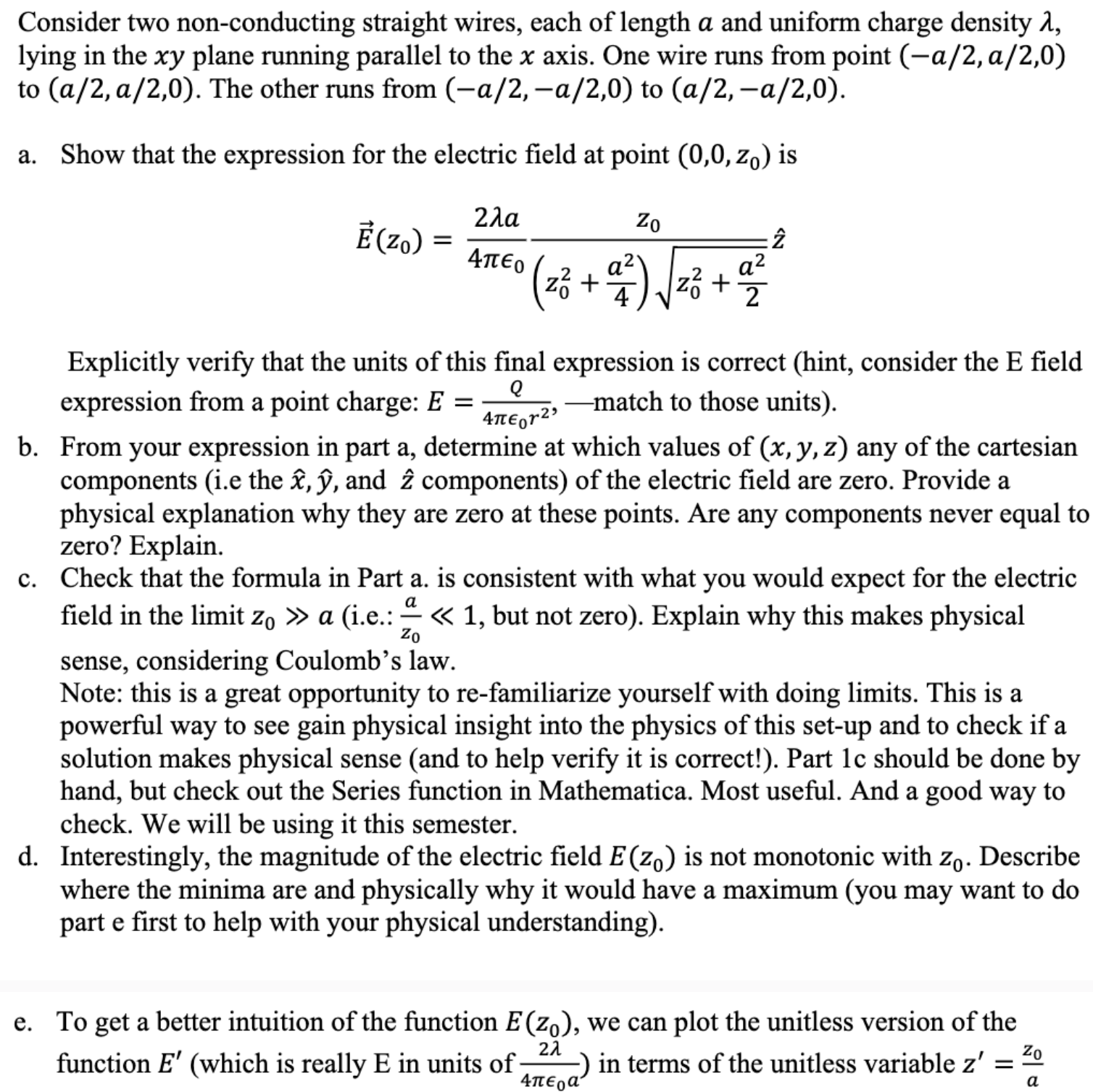Answered step by step
Verified Expert Solution
Question
1 Approved Answer
Consider two non-conducting straight wires, each of length a and uniform charge density , lying in the xy plane running parallel to the x

Consider two non-conducting straight wires, each of length a and uniform charge density , lying in the xy plane running parallel to the x axis. One wire runs from point (-a/2, a/2,0) to (a/2, a/2,0). The other runs from (-a/2,-a/2,0) to (a/2, -a/2,0). a. Show that the expression for the electric field at point (0,0, zo) is (zo) = 2 Zo (z + a a 4 2 Explicitly verify that the units of this final expression is correct (hint, consider the E field expression from a point charge: E = -match to those units). Q 23 b. From your expression in part a, determine at which values of (x, y, z) any of the cartesian components (i.e the , , and 2 components) of the electric field are zero. Provide a physical explanation why they are zero at these points. Are any components never equal to zero? Explain. a c. Check that the formula in Part a. is consistent with what you would expect for the electric field in the limit zo a (i.e.: < < 1, but not zero). Explain why this makes physical sense, considering Coulomb's law. Zo Note: this is a great opportunity to re-familiarize yourself with doing limits. This is a powerful way to see gain physical insight into the physics of this set-up and to check if a solution makes physical sense (and to help verify it is correct!). Part 1c should be done by hand, but check out the Series function in Mathematica. Most useful. And a good way to check. We will be using it this semester. d. Interestingly, the magnitude of the electric field E (zo) is not monotonic with Zo. Describe where the minima are and physically why it would have a maximum (you may want to do part e first to help with your physical understanding). e. To get a better intuition of the function E(zo), we can plot the unitless version of the 21 function E' (which is really E in units of - -) in terms of the unitless variable z' Zo = a
Step by Step Solution
★★★★★
3.40 Rating (156 Votes )
There are 3 Steps involved in it
Step: 1
This problem set appears to relate to the electric field induced by a pair of nonconducting straight wires with uniform charge density and involves several parts that deal with the calculation and und...
Get Instant Access to Expert-Tailored Solutions
See step-by-step solutions with expert insights and AI powered tools for academic success
Step: 2

Step: 3

Ace Your Homework with AI
Get the answers you need in no time with our AI-driven, step-by-step assistance
Get Started


